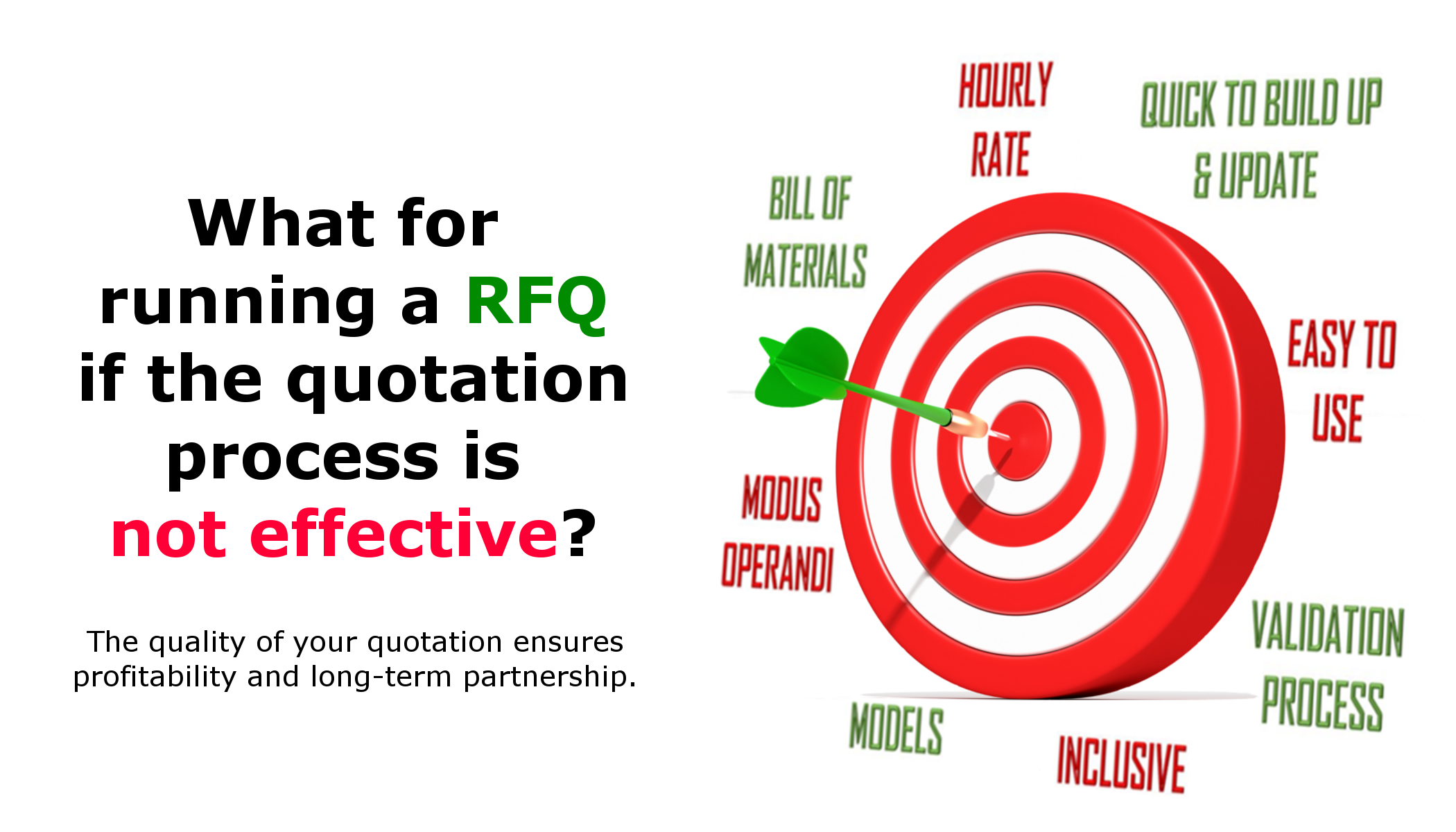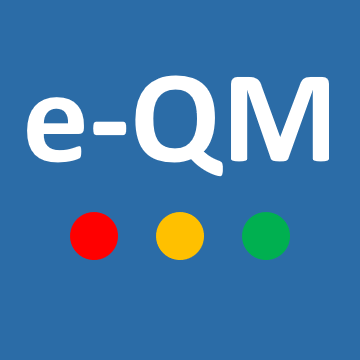
The quality of quotation is not only a key part of your profitability, it is also an essential part of a serene commercial partnership
As mentioned in my previous post, a proper quotation process enables to create a positive collaboration in daily operations as well as on the long run.
What makes a quotation for services a good one?
It has to be:
– Based on full specifications,
– Structured with models,
– Inclusive with all the relevant costs included into a variable price per trade unit,
– Quick to complete,
– With all details available,
– Easy to build up, use and control,
– Subject to a validation process.
First, the perimeter of the requested quotation must be crystal clear. Today, corporate strategies bring countries together. Companies need to combine several local approaches into a larger regional viewpoint. For the client company, it means running multi-country benchmark, RFQ or network optimization project. For the service provider, it means anticipate and make the relevant proposal. You have to be able to define the best possible network of production sites to cope with the targeted global growth. Quotation must include production but also any other incurring costs for networking such as storage and transport.
The price per trade unit can be calculated as fully variable. Once the perimeter is clear, you can start listing the associated costs and defining the price structure. As it often happens, client companies ask the service providers for filling a pre-structured price list. It can be a mix of variable and fixed prices, the trend being to get everything variable. All the inventoried costs, of any kind – workers, management, equipment, transport, storage… – have to be split over and included into each quotation.
Understand indeed what is requested with full specifications
The very first step of the quotation process is already a challenge. It is still a widespread issue to have companies unable to produce clear and complete bills of material, including the consumables. Even the best service provider has not got a crystal ball. The other way around, a service provider should always insist to get all the necessary data before making an offer. Obviously, there is not no good proposal without good input data.
The next point is the thorough list of the actions required by the client company. This is the modus operandi. It goes together with the bill of material. The service provider needs it to design the best possible processes and maybe innovative solutions. Processes mean time, skills, equipment’s and all the related costs. It has a direct impact on the quotation. The pre-production test is also a test for validating the quotation, which should exactly match with the production set-up.
Take the lead and control
All roads lead to a quotation. But there are actually far too many! The client company gets lost. The service provider as well! Instead of letting each salesperson imagine his / her own way to quote, it is much more powerful to define a frame of reference beforehand. Founded on a common base of Lego like elements, models are build up for each kind of products of your portfolio. It is simple, tailor-made and evolutive. The quotation finally comes as the last step. It is enough to choose the right model and to adjust case by case what is not yet defined. Quoting has never been that easy and fast.
One quotation is for your budget like one piece in a puzzle, they are dependent on one another. One changes and the other one needs to be updated. The hourly rate is the binding parameter to be adjusted. It includes all kinds of costs such as variable, direct and indirect structure as well as the margin. Together with any other additional costs such as storage or transport, the hourly rate gives an exact overall picture of your budget.
A quotation is just a picture at one particular time. What’s next? You never know exactly. As your business is moving forward, you must be able to update any quotation as well as the hourly rate. You may have to correct a mistake, precise details, align with the last negotiation, take into account the impact of the continuous improvement projects, integrate new regulations aspects… All along the business cycle, the quotations are at the core of your profitability. They make an essential part of your data history. You need to keep them up to date and archive the older versions.
Today’s working approach requires a deep and easy collaboration within and outside organizations. Therefore, data have to be quickly accessible. For each authorized user, access right management ensures that only the necessary functionalities and related data are available. Data can be shared between any level of any department. They can also be shared with your partners. Decision-making usually involves several persons. Workflows as well as information flows are mandatory to make it straightforward. Mailing files back and forth is not any longer a solution, isn’t it?
Excel is a wonderful tool, get rid of it! We all love it, myself included. But it is obviously far from enough to implement all the mentioned above. Excel or any common software cannot handle properly the quotation process and the huge amount of data it generates. It will hardly integrate some more functionalities. It will not deal with data analysis and all what you can get from quotations’ data. Neither it can support the mandatory workflows. Instead, get a powerful up-to-date software which can be customized and user-friendly as well as interfaced with your corporate ERP.
Defining your quotation process for your business is like laying one of the foundation stones for your home
Forget long and non-factual discussions and focus on your core business. Implementing a comprehensive quotation process is the base for a constructive cooperation between a client company and its service providers. Then it is a fantastic tool for controlling and improving your activity.
Thank you for your interest
Don’t hesitate to contact me for any question or comment.
This post is the 2nd one out of 3 dealing with quotations.
The 1st post was about the reasons why transparent price calculation process is the sine qua non of long term partnership.
The 3rd post will explain how your quotation process can be the starting point for powerful continuous improvement.
Your packaging value-added services activity is:
– About managing many modus operandi, bills of material and the associated processes whatever they are manual, automatic or semi-automatic,
– About ensuring end-to-end operations performance,
– About ensuring the best service quality level,
– Subject to continuous and frequent price calculation because of an update, a new requirement, a product change, a new technology,
– Subject to regular global benchmark, RFQ, network optimization project,
– Organized within a multi-country network of production sites,
– In-house or sub-contracted.
Check out the e-Quotation Models solution, a ground breaking Continuous Improvement software based on the quotation process.
e-Quotation Models – Smart Vision, Great Impact
This post was published the 01/04/2017 on LinkedIn at www.linkedin.com/in/yannis-faure
